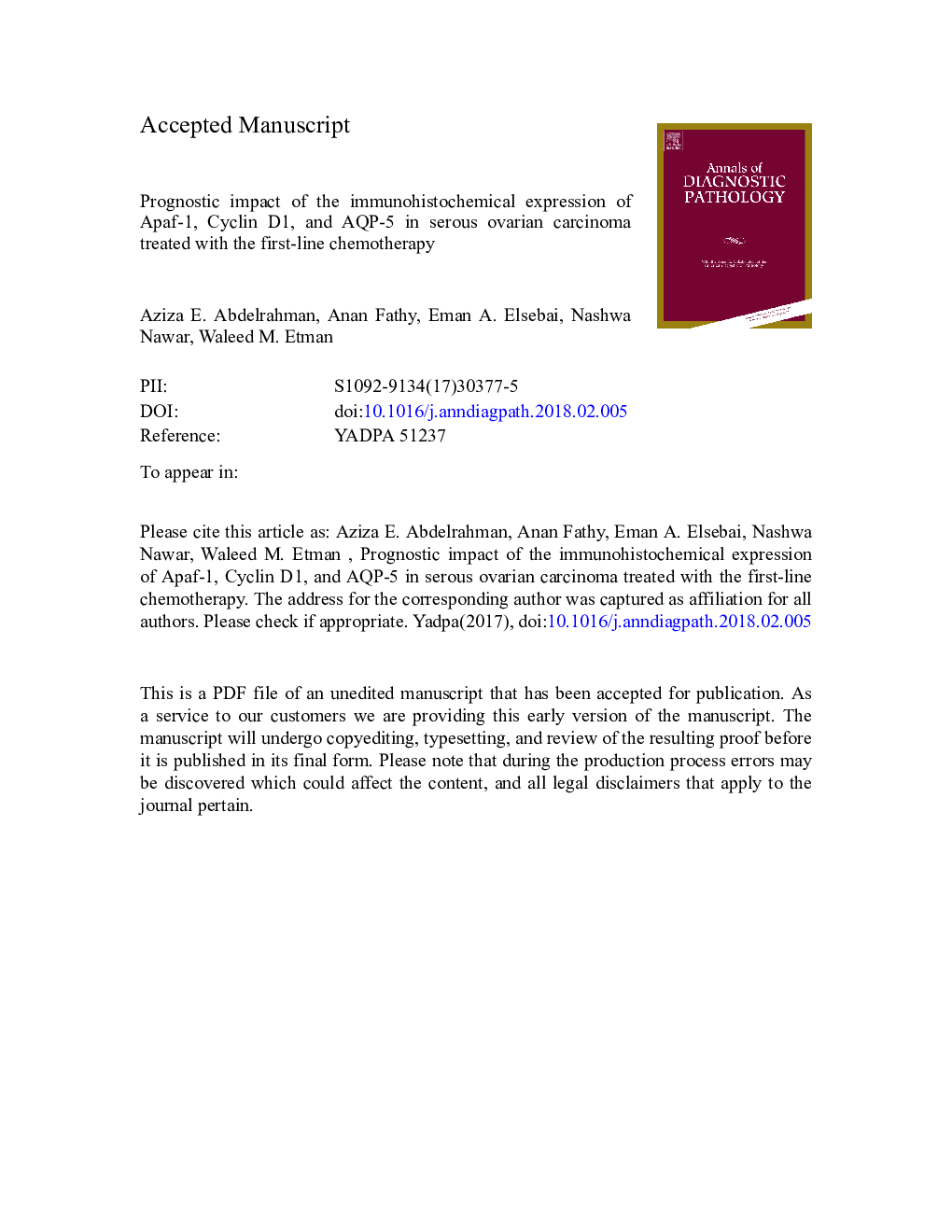| Article ID | Journal | Published Year | Pages | File Type |
|---|---|---|---|---|
| 8807162 | Annals of Diagnostic Pathology | 2018 | 32 Pages |
Abstract
Chemoresistance is the major obstacle to effective treatment in patients with serous ovarian carcinoma (SOC), which frequently related to the failure of chemotherapeutic agents to induce apoptosis. In this study, the immunohistochemical expression of Apaf-1, Cyclin D1, and Aquaporin-5 (AQP-5) was studied in 50 paraffin blocks of SOC. Data on overall survival (OS), disease-free survival (DFS) and response to the first-line chemotherapy were collected and then statistically analyzed. Apaf-1 expression was observed in 84% of the SOC cases with a significant down-regulation with higher tumor grade, lymph node metastasis, and advanced FIGO stage. Cyclin D1 expression was found in 70% of the cases with a significant up-regulation with higher tumor grade, lymph node metastasis, and advanced FIGO stage. Positive AQP-5 expression was noted in 84% of the cases with a significant positive association with higher tumor grade, lymph node metastasis, and advanced FIGO stage. During the follow-up period, the Apaf-1 expression had a significant negative association with OS and DFS (pâ¯<â¯0.001 for each), while both Cyclin D1 and AQP-5 expression had a significant positive association with unfavorable OS and DFS. The cases of SOC treated with suboptimal surgery revealed a significant association of low Apaf-1, high Cyclin D1, and strong AQPs with the poor response to the first-line chemotherapy (pâ¯=â¯0.047, pâ¯<â¯0.001, and 0.006 respectively). Conclusions: Down-regulation of Apaf-1 protein and the overexpression of Cyclin D1 and AQP-5 proteins possibly contribute to an aggressive SOC with a high risk of recurrence and poor response to the first-line chemotherapy.
Related Topics
Health Sciences
Medicine and Dentistry
Pathology and Medical Technology
Authors
Aziza E. Abdelrahman, Anan Fathy, Eman A. Elsebai, Nashwa Nawar, Waleed M. Etman,
